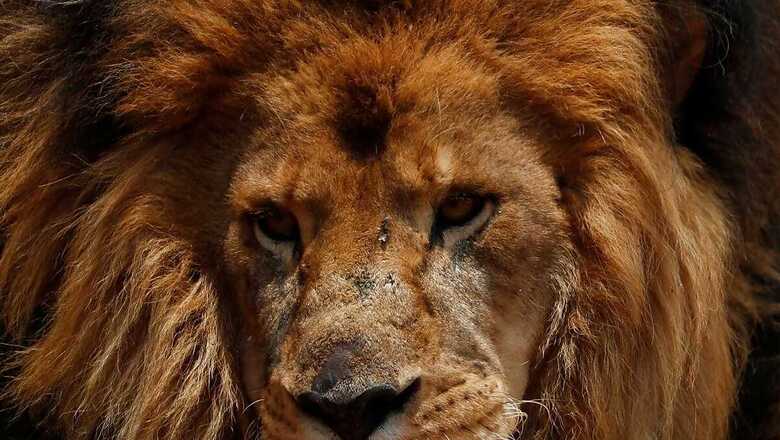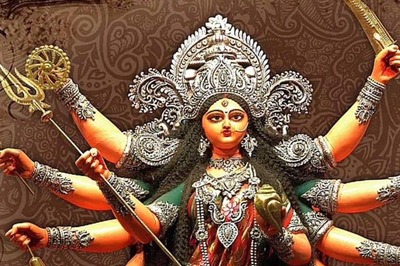
views
Believe it or not, the internet has helpful suggestions on what to name lions, not merely dogs or cats. It must be acknowledged on anecdotal evidence, though, that there are probably more Golden Labradors named Simba than African or Asiatic lions. However, it is comforting to know that the internet offers options—which sundry wildlife wardens and others charged with the onerous and uncommon task of naming lions can perhaps consult, to avoid complications later.
As with any controversy, the buck stopped at the top when it came to the issue of who had named a pair of lions Sita and Akbar in a Tripura wildlife sanctuary, leading to the suspension of the state’s Principal Chief Conservator of Forests and Chief Wildlife Warden, PL Agarwal last week. It was found that “wildlife officials” had put the two names in the dispatch records when transferring the pair to West Bengal but as the seniormost, Agarwal has been suspended.
No doubt the officials will be cleared soon enough, but the Calcutta High Court’s Jalpaiguri Circuit Bench has brought up serious questions about naming animals after deities of any faith as well as famous personages. Presumably, the honourable judge excluded the naming of entire species after well-known Indians, of which there are countless examples from the dinosaur Barapasaurus tagorei to jumping spiders Bristowia gandhii, and Marengo sachintendulkar.
But it may be germane to cite a few examples of animal names that did not excite controversy—probably because of the context. The cynosure of the Sri Manakula Vinayagar Temple in Puducherry was an elephant named Lakshmi, who passed away aged 32 in 2022. She was the star attraction for nearly 25 years and was accorded a ceremonial burial with everyone from the Lt Governor and prominent politicians to thousands of ordinary Puducherrians paying tributes.
More germane to the present situation is the tale of the magnificent tigress named Sita who ‘ruled’ Bandhavgarh in the 1980s and 1990s and made it to the cover of National Geographic. She was tragically trapped and killed in either late 1998 or early 1999 by poachers for an international gang. Her going missing in November 1998 also made headlines but not for her name. And then too wildlife officials were in the dock—for being lax about reporting her disappearance.
Sita had many offspring, from two mates—first Banka and then Charger—and never triggered any controversy. Her children all had eminently uncontroversial names too, from Bara Baccha and Langru to Mohini, Pyari and Reshma. Even the other ‘famous’ tigers of Bandhavgarh had unexceptional names, from plain B1 and B2 to Bamera, Jobi, Bokha and even Bheem. And other tigers in the same jungle also had very non-contentious names from Spotty to Mangu.
Sita was not the only Panthera tigris tigris to be named so either, with almost a dozen such names cropping up in the lists of zoos across India since 1974. After all, some animals are sacred to faiths but cannot be said to be adherents of it, so lion Atul and lioness Sonia becoming parents to offspring named Akbar and Laxmi in Hyderabad Zoo and three tiger siblings being named Amar, Akbar and Antony (in Mysore and Mangalore zoos) should not offend anyone.
Unless, of course, the intention behind choosing particular names for pairs is to incite or offend—or be deliberately “secular” regardless of sentiment. That is why context is crucial. While many big cats may indeed have been named Sita and Akbar since the 1950s, today the world is profoundly more interconnected and aware than in the 20th century, and every issue has the potential to become public and therefore prone to incite reactions. More discretion is warranted.
Those interested in animal conservation efforts know that animals in breeding programmes of zoos are never paired according to their names but their lineage, which is particularly known if their parents were also born and/or raised in captivity. Thus, some of the resultant family trees turn out to be very convoluted indeed if only their given names are taken as indicators rather than their pedigree charts. Being offended by such unwitting pairings is unnecessary.
The magnificence of big animals—primarily lions, tigers and elephants—inclines humans to give them grand names; gods, goddesses and celebrities are a natural choice. There is usually no guile or agenda behind it. And there is no denying that emperors, from Ashok to Akbar are shoo-ins when it comes to naming imperial (and imperious) kings of the jungle, not to mention Durga, Lakshmi, Saraswati, Ganesh, Krishna and Bhola. But again, the context is crucial.
The resemblance of big apes to homo sapiens, interestingly, leads to them being bestowed with human or cute names, such as Koko (1971-2018) the most famous gorilla in the US who lived in a special reserve in California. Koko could communicate in sign language and understand 2,000 words in English. She even adopted a cat as a pet and reportedly named it All-Ball. That there were captive gorillas named Kiki and Coco too underlines the cute name tendency.
Rwanda, whose high-end tourism depends to a large extent on its rare mountain gorillas, has created a national event to name them. For the past 19 years, every September at the Kwita Izina festival, gorillas born in Volcanoes National Park the year before are named. In September 2023, among the names chosen by local and international VIPs for the 23 baby gorillas were Umucunguzi (Redeemer), Narame (Long life), Mugisha (Blessing) and Bigwi (Achiever).
As naming animals after divinities will be more fraught than ever in our social media-driven world, (especially if they feature in breeding programmes), why not take a leaf from Rwanda’s book? An annual nationwide census of baby animals in zoos and other breeding programmes can be conducted to ascertain how many need names. India need not invite foreigners and celebrities to do the honours, Indians can be asked to suggest names and choose by draw of lots.
As governments are geared to take into consideration all aspects when overseeing any project, the naming of prominent animals (especially those who may become part of breeding programmes) would certainly be done judiciously. Throwing open the choice of names to the people—rather than restricting it to the predilections of wildlife officials as happens now—will also make it indisputably open and democratic. The internet’s name options would not be needed either!
The present problem of the Sita-Akbar jodi—created by unthinking officials and offended activists—can be easily dealt with. Change their names if it resolves the issue; the big cats themselves are surely not attached to their monikers even in the unlikely event that they know what those are. Would it be better if Sita becomes Jodha or Akbar becomes Ram? Hard to tell. Maybe it would be best to rename them both after good attributes, as baby Rwandan gorillas are.
The author is a freelance writer. Views expressed in the above piece are personal and solely those of the author. They do not necessarily reflect News18’s views.



















Comments
0 comment